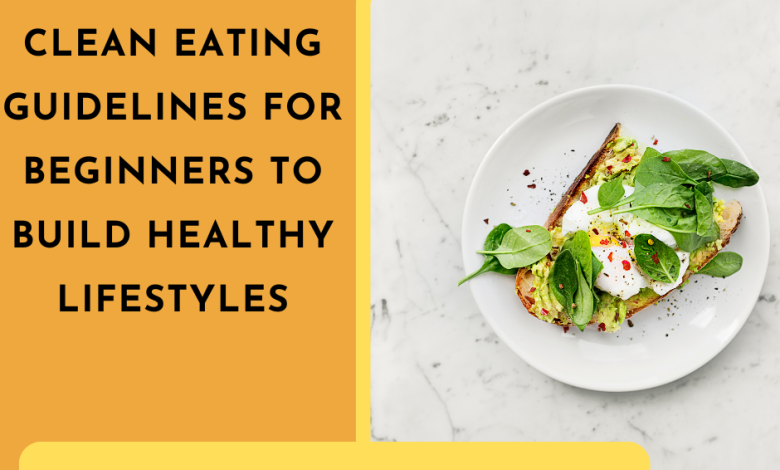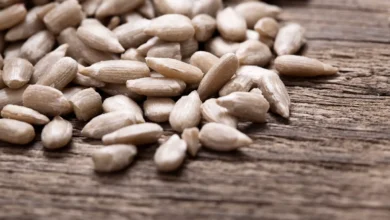10 Eat Clean Recipes To Build Healthy Lifestyles
10 Eat Clean Recipes For Newbies - Clean Eating Tips

A clean eating plan allows you far more flexibility than other diets. Food groups don’t need to be cut out, and it’s simple to modify for your lifestyle. Find some eat-clean diet that you love and stay healthy from now on!
Although there are many versions of clean eating, the eat clean menu essentially consists of fresh and “clean” meals. The health advantages of eating foods high in nutrients that come straight from the land and are not overly processed are the main motivation for adopting a clean eating lifestyle. Your body receives nourishment from clean eating in the form of nutritious foods. Below are 10 tips for you to build a clean diet and maintain a healthy body both inside and outside.
-
Eat Fruits & Vegetables
Eating more fruits and vegetables can help reduce your risk of developing a variety of chronic diseases, such as high blood pressure, type 2 diabetes, heart disease, obesity, and cancer. To ensure the quality of your vegetables and fruits, buy them fresh and organic from local farmers. Leafy green vegetables such as spinach, kale, and arugula are simple and nutritious ingredients that can be incorporated into nearly any meal. Simple ways to eat more healthy produce include adding a mixed green salad to your meal, incorporating sautéed spinach into an omelet, or tossing fresh kale into your favorite smoothie.
-
Eat Grain (cereal) food
Whole grain bread, whole grain or gluten-free pasta, brown rice, and other whole grains are acceptable. Beans provide fiber and nutrition, while nuts provide healthy fats that keep you satisfied. Select organic canned and dried beans. Raw nuts and seeds are also preferable to those that have been salted, seasoned, or sugared. In order that your meals are easier to eat and match your taste, you can mix these grains with yogurts and fruits to have breakfast or snacks.
-
Cut out sugar
Too much added sugar consumption has been linked to a variety of health problems ranging from obesity to heart disease. Reduce added sugars in your diet by limiting sweets such as soda, candy, and baked goods. Look for foods that don’t have sugar as an ingredient, or make sure it’s listed near the bottom, indicating that less of it is used in the food. For example, instead of ice cream at night, try Greek yogurt topped with berries, unsweetened coconut, and cinnamon.
-
Eat less meat
More and more research suggests that eating less meat is good for you. Eating less meat can help lower your blood pressure, lower your risk of heart disease, and help you maintain a healthy weight. If you’re concerned about getting enough protein, a vegetarian or even vegan diet can provide plenty.
-
Eat nutrient-dense food
“Nutrient-dense” foods contain a high concentration of nutrients while being low in calories. They’re ideal for people who want to lose weight. Broccoli, berries, eggs, red bell peppers, seeds, wild-caught salmon, and sweet potatoes are all high in nutrients. Nutrient-deficient foods, on the other hand, such as candy and fast food, are high in calories but low in nutrients.
-
Include protein and carbohydrates in all meals
Protein is an essential muscle-builder and can also help you lose weight. It keeps us feeling fuller for longer when eaten throughout the day. Be mindful of the types of meals you prepare and space out your protein. Thus, all vitamins, protein, fats, and carbohydrates are required by your body; don’t skip any of them, but keep them at a consistent level.
-
Say no to high-calorie drinks
High-calorie drinks, such as specialty coffees and soft drinks, add 400 to 500 calories to your daily total. Choose water or, my personal favorite, unsweetened tea first (any flavor). Hydrate with healthy options like water, water infused with fresh fruit, and unsweetened green tea to limit your added sugar intake. Other healthy beverages include low-fat or skim milk and 100% fruit juice diluted with sparkling water.
-
Eliminate “diet food”
Many people who are trying to lose weight turn to “diet” foods such as low-fat dressings, diet soda, meal replacement bars, and weight-loss drinks. These foods may contain artificial sweeteners, preservatives, and sugar. Thus, if you want to eat a clean diet, you should limit or even avoid eating “diet food.” Choose whole, non-diet foods like unsweetened, full-fat yogurt and natural peanut butter with no added sugar when following a clean eating program.
-
Keep eating clean even when eating out
Sometimes, you don’t want to cook, or on some special occasions, you have to dine out. Eating out sometimes is alright but always be aware of what you eat. Choose meals rich in fresh produce, complex carbohydrates, healthy fats, and lean proteins. Although it’s fine to indulge in a treat every now and then, try to limit heavy dishes like creamy pasta and fried foods as much as possible. Additionally, before your meal, replace the bread basket with a healthy salad to increase your vegetable intake while filling up on fiber.
-
Divide into many small meals throughout the day
This usually translates into three main meals and two or three substantial snacks. This way of eating keeps you from skipping meals and overeating. It also keeps your blood sugar levels stable, preventing fatigue. When you eat frequently, it is easier for your body to digest and absorb nutrients from food, and you are less likely to gain weight.
Final Thoughts
Eating clean is one of the best ways to maintain a healthy diet and lead a healthy lifestyle. It’s better to focus on choosing foods that are minimally processed such as fruits, vegetables, and grains. It is up to your taste and favorite foods to determine which clean eating tips are best for you. If you are looking for some deals and coupons that help you save on food, check all updated coupons and coupon codes that FindCouponHere or CouponPlay collected for you here. Shop for fresh vegetables, fruits, grains or vitamins, and many more online for less!
Learn more: How Exercise Can Improve Your Mood



